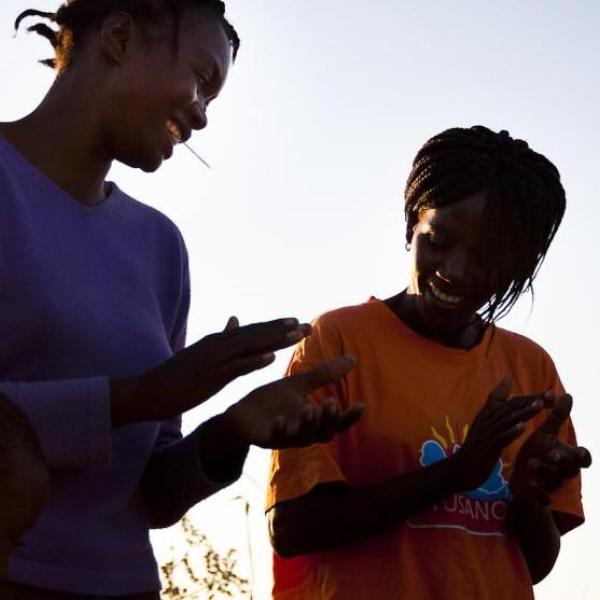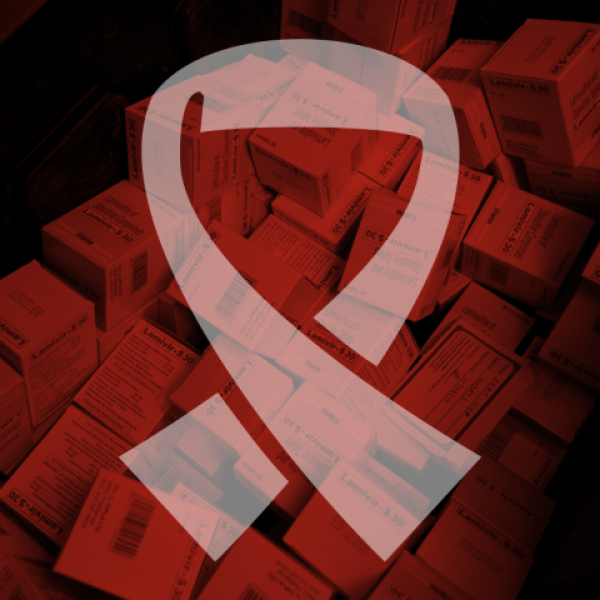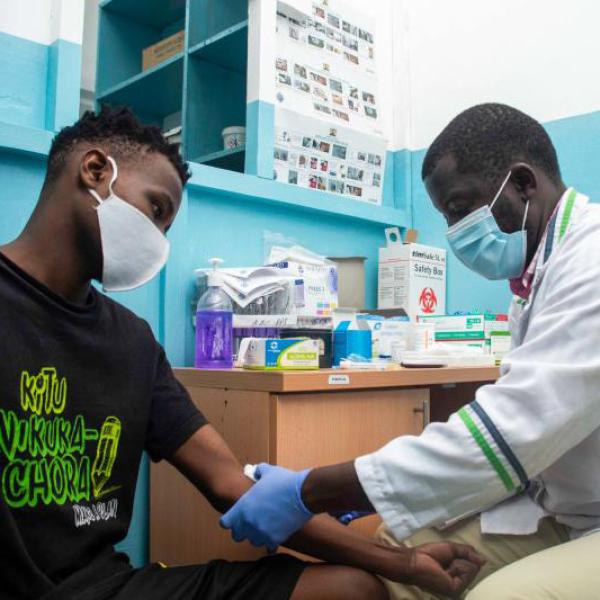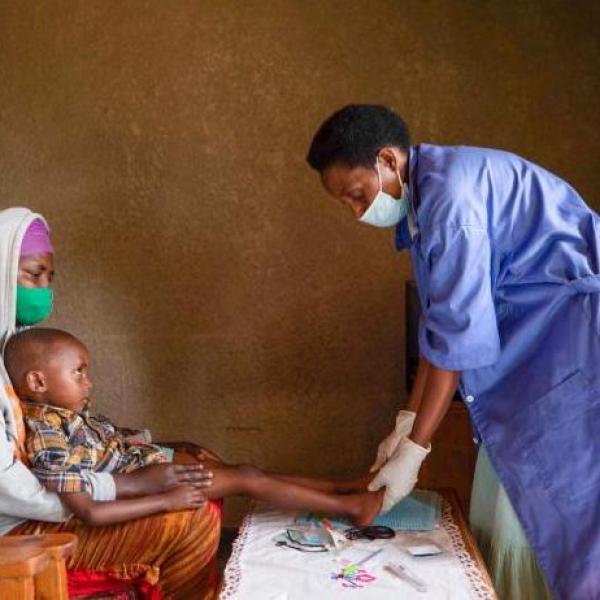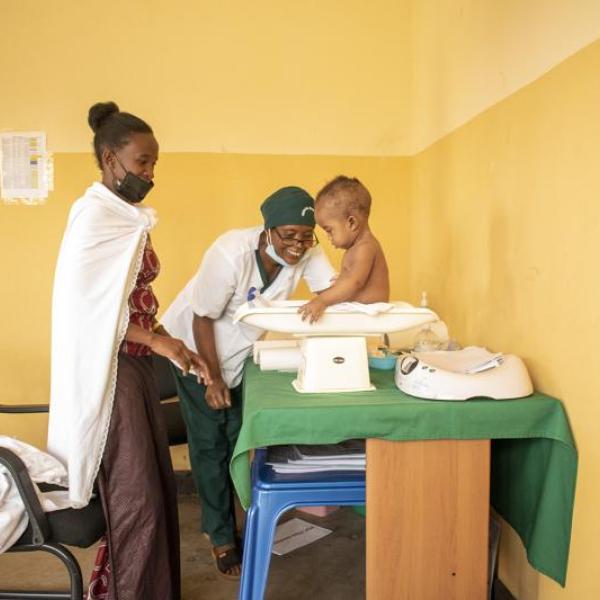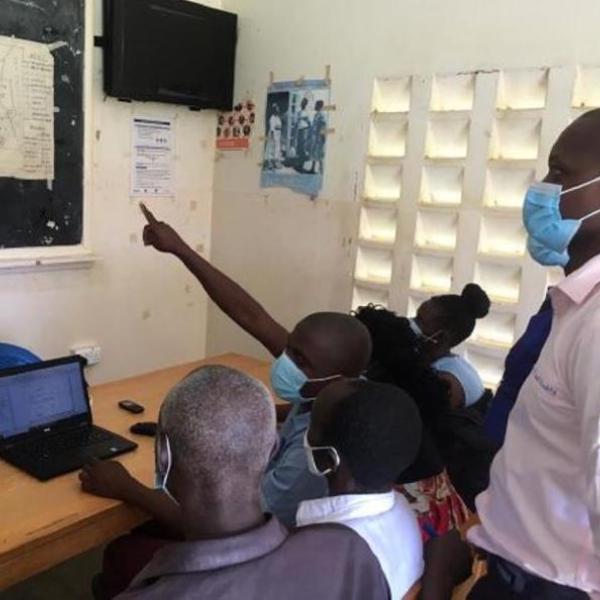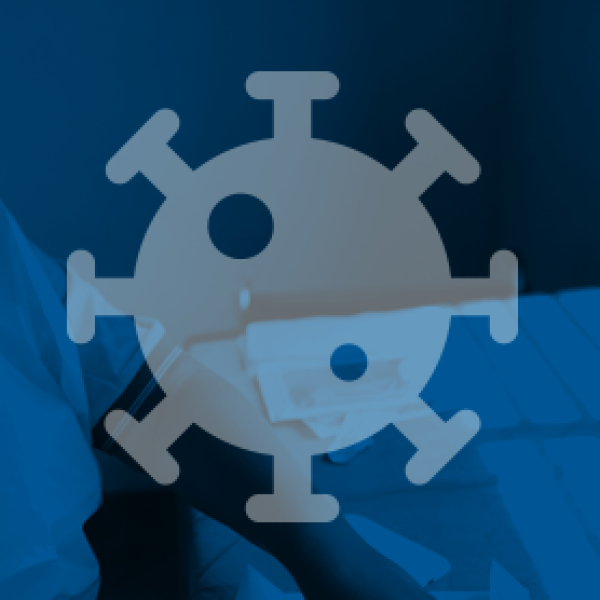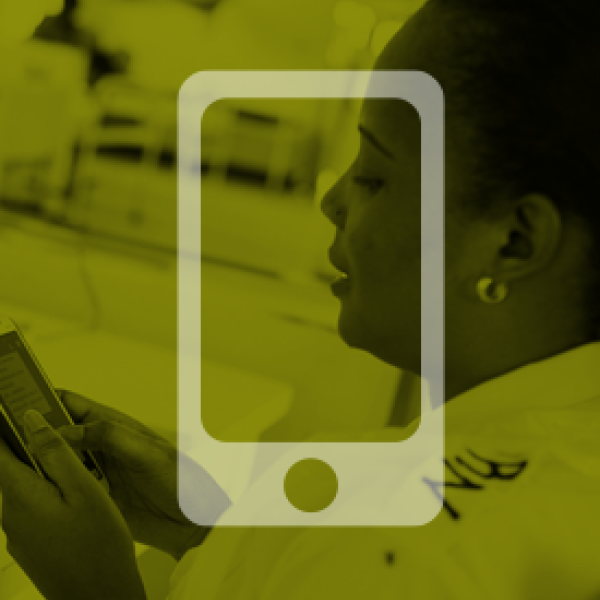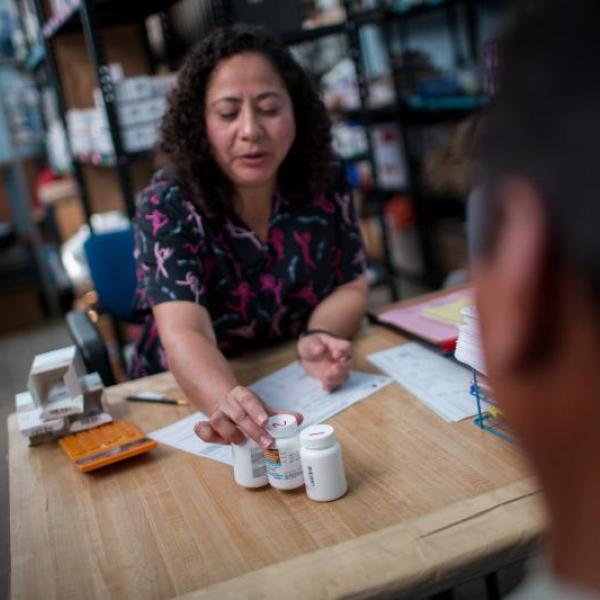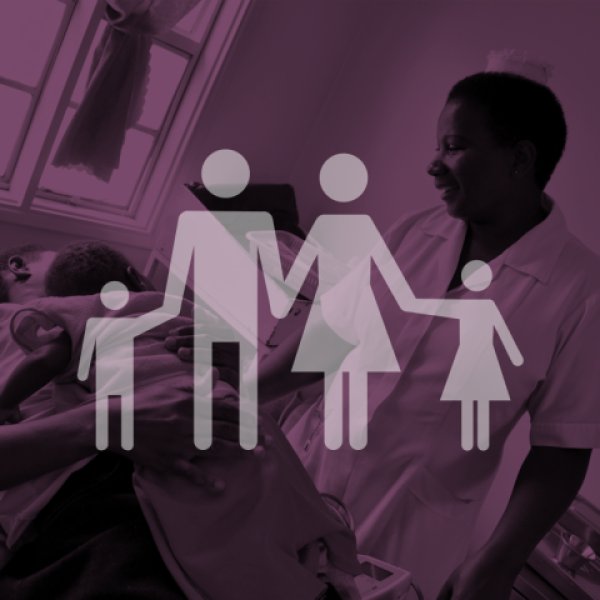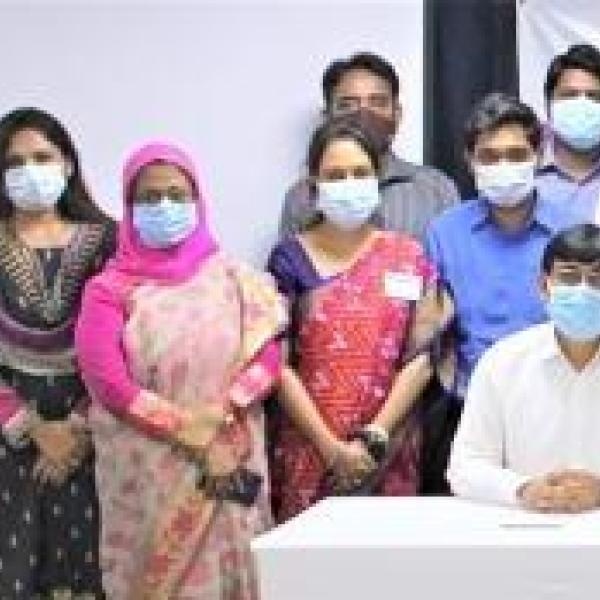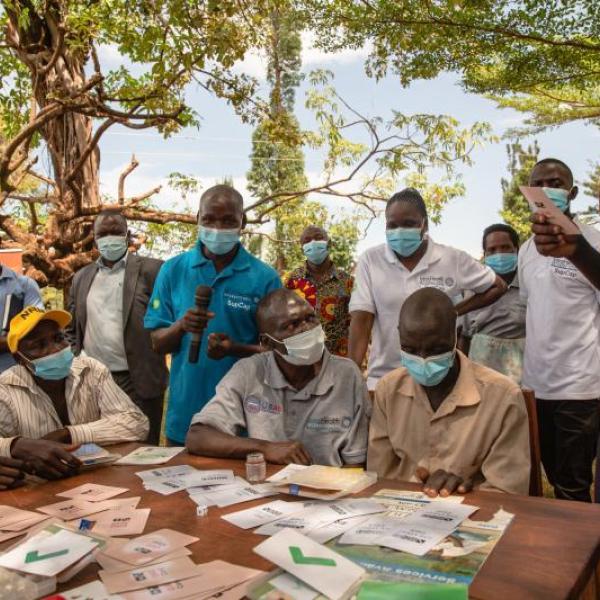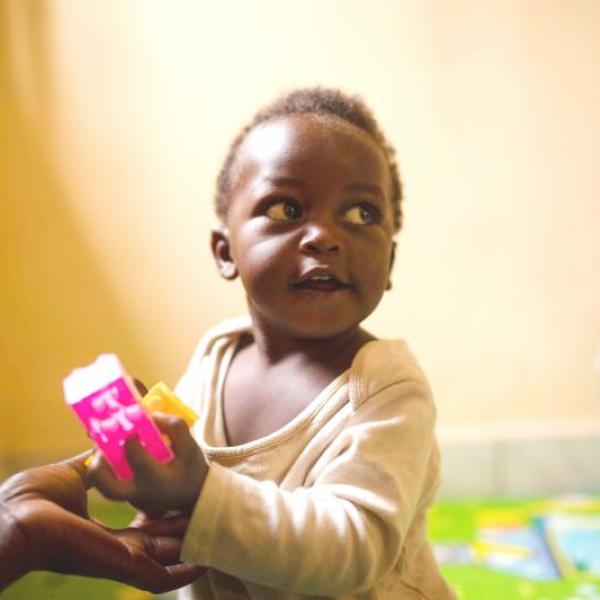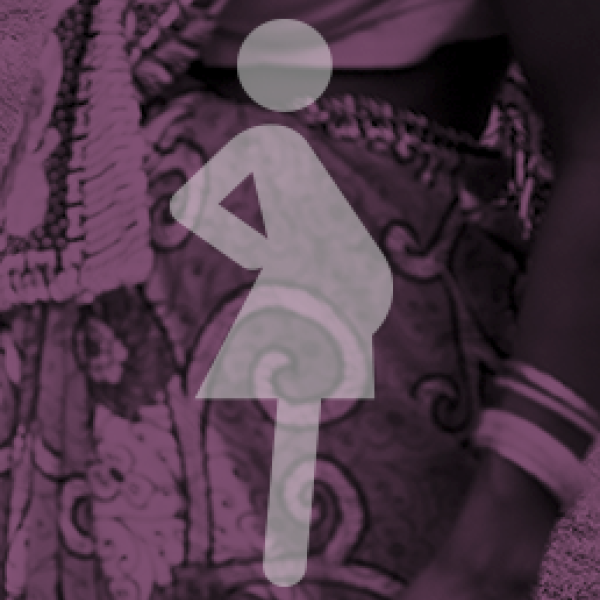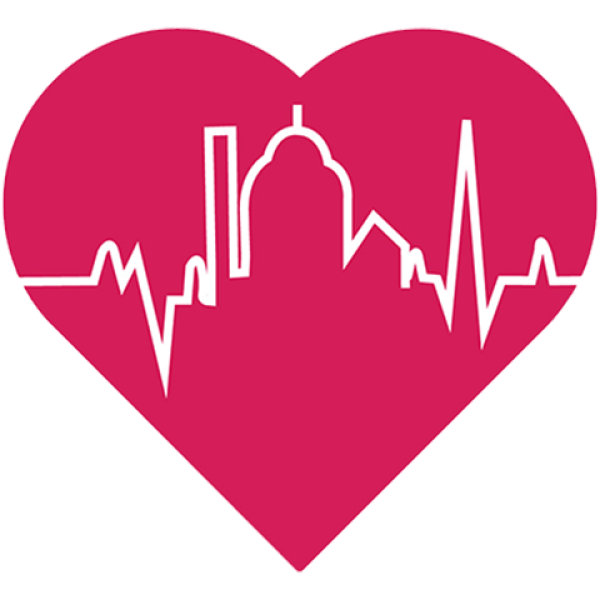Our Mission
We improve the performance of health workers and strengthen the systems in which they work.
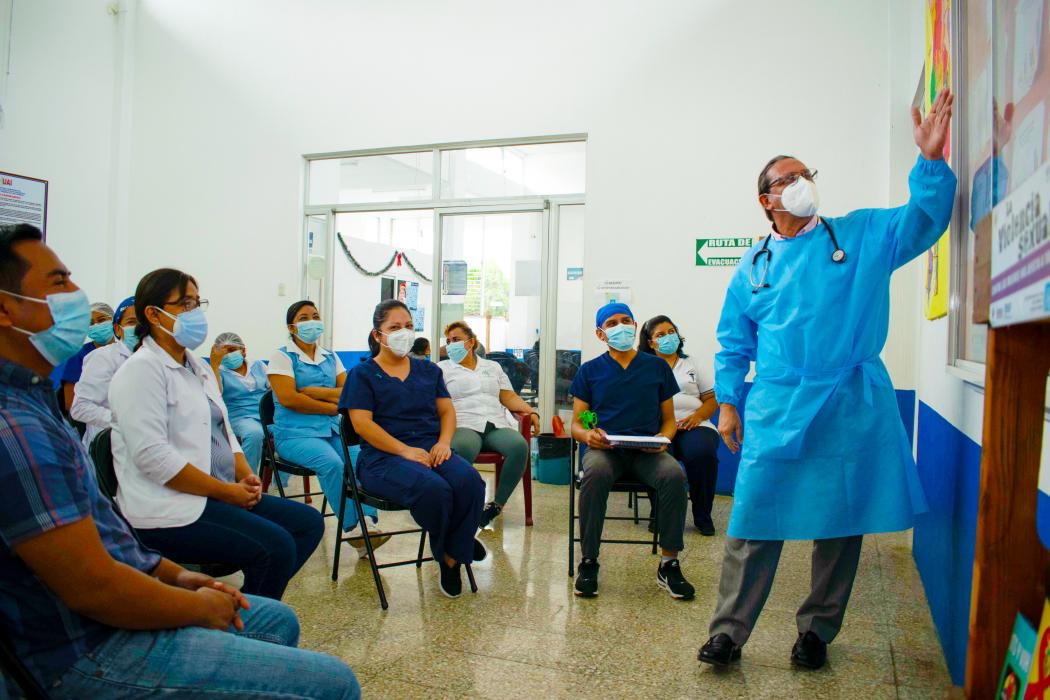
"The engagement of partners that have the know-how to navigate USAID grants, such as ASAP, is important for capacity building because they know what the organization needs to do, and how it needs to be done. And they use local consultants who understand the local trajectory of what’s happening, or the local contexts. So that was very helpful.” —Nkatha Ngeru, CEO, Africa Christian Health Associations Platform, on his organization’s partnership with ASAP
Since 2019, we’ve been a key contributor to USAID’s efforts to support local partners. As the lead for the Accelerating Support to Advanced Local Partners (ASAP) and ASAP II projects, we’ve helped 110+ local entities and government bodies in 18 African countries build their operational systems and governance capacity to implement complex projects and helped them on the path toward becoming direct recipients of USAID and PEPFAR funding as well as grants from other donors.
At IntraHealth, we believe development is most effective when it is locally owned and locally led.
We partner with ministries of health, local NGOs, and communities to strengthen their ability to finance, plan, and implement their own solutions to public health challenges. And we’ve transferred programs to independent, country-based affiliates in Kenya, Namibia, and Tanzania. Our work with local partners centers on the shared goal of reaching more people with high-quality health care through sustainable programs that respond to communities’ needs. It’s how we contribute to a more equitable global health development environment and help minimize power imbalances.
- 6,616
local partners around the world, including health facilities, governments, civil society groups, religious leaders, youth advocates, & more
- 79
local organizations received capacity-building support from IntraHealth’s programs.
- 97%
of 59 IntraHealth-assisted local organizations showing improved performance
- 6,752
attendees benefited from our Accelerating Support to Advanced Local Partners webinar series
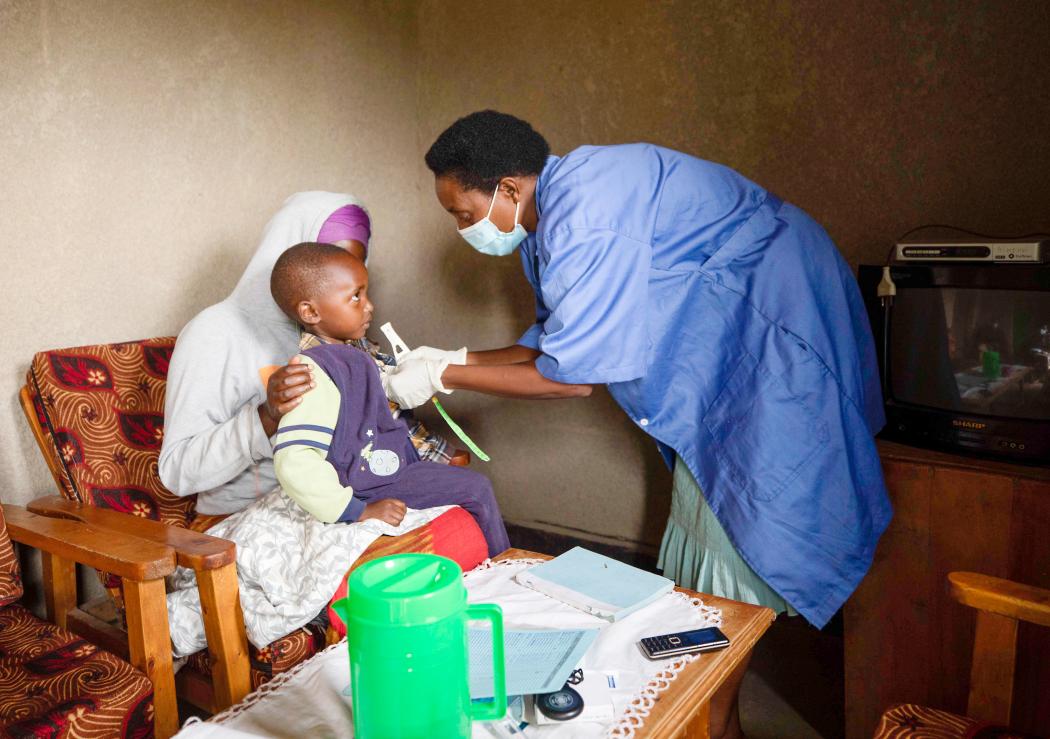
For Izabayo Marcel, August 2021 was a heartbreaking month. His wife died while giving birth to their baby, Sebastian, who suffered from birth asphyxia. The condition left Sebastian fighting for his life. The doctors and nurses at Ruhengeri Referral Hospital acted quickly—and their skills saved baby Sebastian. But Marcel also needed their help.
“After my wife died, I didn’t know what to do, how to feed him,” Marcel says. “But when we attended the clinic sessions, I was relieved because the health workers answered a lot of questions on how to raise Sebastian.”
To help health workers provide holistic care, IntraHealth’s USAID Ingobyi Activity initiated Pediatric Development Clinics in selected health facilities in Rwanda. The project first trained hospital health workers in the approach; they then went on to train and work with providers from lower-level health centers in establishing the clinics.
After Sebastian’s birth, Marcel received monthly training and counseling from clinic health workers on topics such as proper nutrition, hypothermia prevention, hygiene, and boosting the baby’s cognitive and emotional development.
IntraHealth approaches health workforce development and health systems strengthening holistically—so health workers can provide communities with more comprehensive, people-centered care.
We use strong human resources management with data-driven processes and systems to make sure skilled, motivated health workers are in the right place at the right time. This includes their critical role in detecting, reporting, and responding to pandemics and other emerging threats.
Our programs work with government bodies, health professional schools, local leaders, and health facilities to:
- strengthen curricula and instruction
- improve recruitment, deployment, and retention
- provide supportive supervision and mentorship
- roll out digital health tools for eLearning and emergency communication
- advocate for policies that address investment in the health workforce, gender discrimination, workplace safety, and mental health.
- 174,067
health workers reached
- 5,189
health facilities supported to strengthen services
- 289,271
items of personal protective equipment provided to health workers to keep them safe on the job
- 3,380
health facilities received on-site supportive supervision, mentoring, or coaching
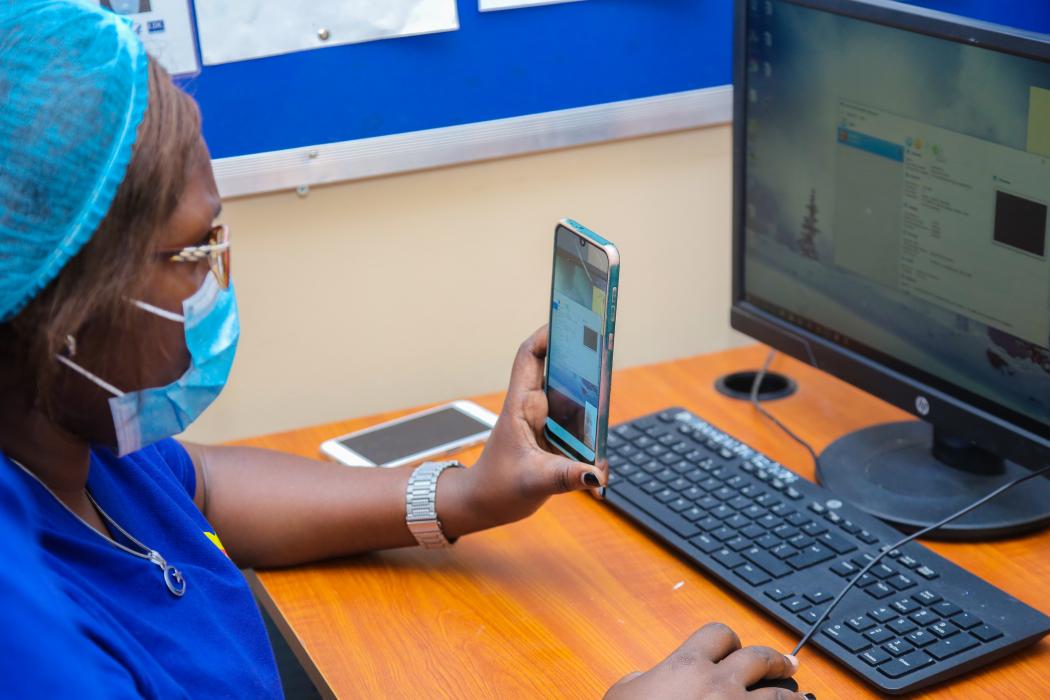
“We had a previous map that we drew on a manila paper,” says Ayalo Anna Florence, a health information assistant at Kagawara Health Center III in Uganda. “It was drawn every 3 to 4 months with inaccurate features, which was very challenging. Since the introduction of GIS, our programming improved because we’re using clear maps. We can now identify schools around the community, and that’s where we go to provide immunizations.”
Having GIS spatial data proved instrumental for IntraHealth’s USAID Regional Health Integration to Enhance Services in Eastern Uganda (RHITES-E) Activity during the COVID-19 pandemic. Updated maps helped the project distribute 20,000+ standard operating procedures and guidelines for COVID-19 identification, testing, case management, and prevention, as well as infection prevention and control supplies to facilities and communities. Simple but accurate maps documenting interventions also helped health workers visualize vaccine uptake, avoid duplicating interventions, monitor coverage, and use resources more effectively.
From mobile apps to management software, IntraHealth offers health workers and decision-makers the tools and technology they need to do their best work.
Our sustainable and collaborative digital solutions enable health leaders to use data in real time to allocate health workers and supplies quickly and efficiently during emergencies and in providing routine services. We also offer technologies that support health workers on the job, such as for eLearning and peer-to-peer support. Our suite of tools includes:
- iHRIS, open-source software that helps countries track, manage, and plan their health workforces
- mHero, a two-way mobile phone-based communication system that connects ministries of health and health workers
- READI, a dashboard that local partners and projects can adapt to manage data-driven implementation.
- 27
countries using IntraHealth’s iHRIS software to manage their health worker personnel records
- 24,591
health workers digitally connected to the health system through mHero, WhatsApp, or other platforms
- 1,426,544
messages sent to & from health workers using mHero, WhatsApp, or other digital health tools
- 54
digital health technologies developed and/or implemented
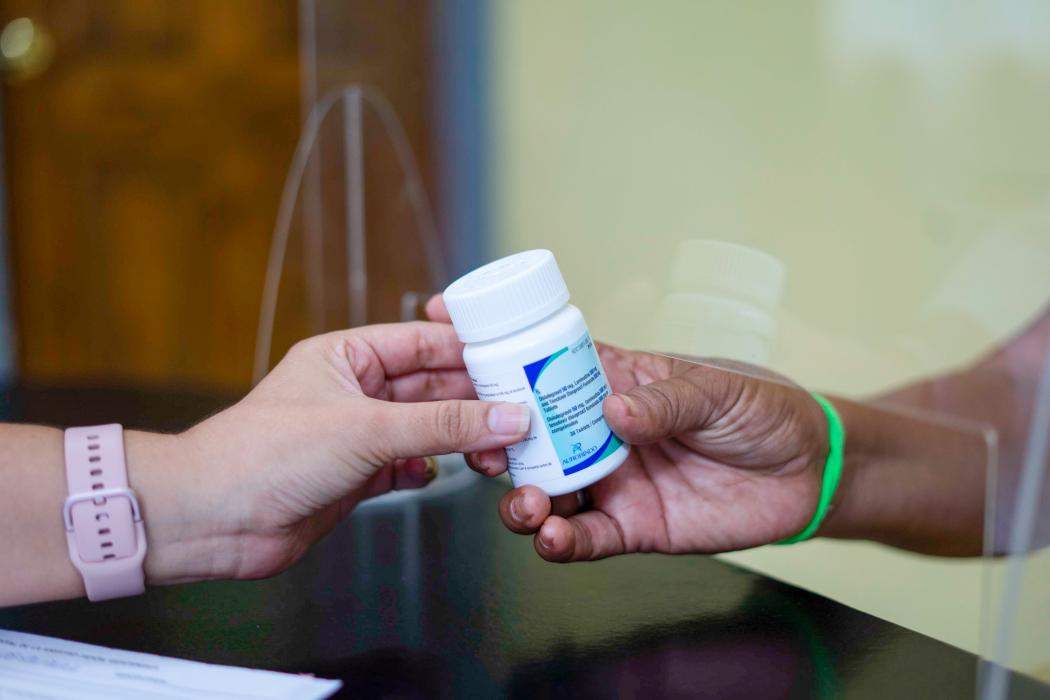
“At first, I feared that I might test HIV-positive and that my girlfriend would refuse to marry me,” said Ladu, a 33-year-old in Juba, South Sudan. “But the health worker explained everything to us. They also said that knowing our HIV status would help us live healthier lives, so we decided to get tested.”
Ladu was nervous, but at his mother’s encouragement, he visited the Kimu Primary Health Care Center to learn more about voluntary HIV counseling and testing. After talking to the health worker there, he felt reassured. The next day, he returned with his fiancé. They both tested negative—and received counseling about condom use, other family planning methods, and practicing safe sex.
The Kimu facility is supported by IntraHealth’s USAID Advancing HIV/AIDS Epidemic Control (AHEC) Activity, which is scaling up comprehensive HIV and TB services in six states of South Sudan. By partnering with local organizations, the government, and communities, AHEC helps train health workers to provide HIV services and adapts evidence-based interventions to increase viral suppression and reduce AIDS-related deaths and further transmission of the virus. As part of this work, more couples like Ladu and his fiancé are now choosing voluntary HIV testing and counseling and practicing safe sex, which means fewer cases of HIV. Over the last two years, the project has also enrolled over 4,600 HIV-positive clients in care and treatment.
IntraHealth is committed to achieving an AIDS-free generation by 2030. That’s why we focus on health workers and the systems that support them as we work together to end the epidemic.
We work with governments, local partners, and advocacy groups to build health workers’ skills in HIV prevention, care, and treatment; deliver client-centered care; and reduce stigma and promote gender equality in HIV services. Our programs support a range of approaches based on local priorities and contexts, including bringing services and antiretroviral therapy to hard-to-reach and key populations, preventing mother-to-child transmission, and applying digital health solutions to improve antiretroviral therapy (ART) adherence and gather feedback on the quality of services.
- 511,305
individuals tested for HIV & received test results
- 98,648
HIV-positive individuals currently on antiretroviral therapy
- 92%
of HIV-positive clients on antiretroviral therapy who were tested for viral load achieved suppression
- 77%
of clients on antiretroviral therapy pick up 3+ months of antiretroviral drugs in one visit
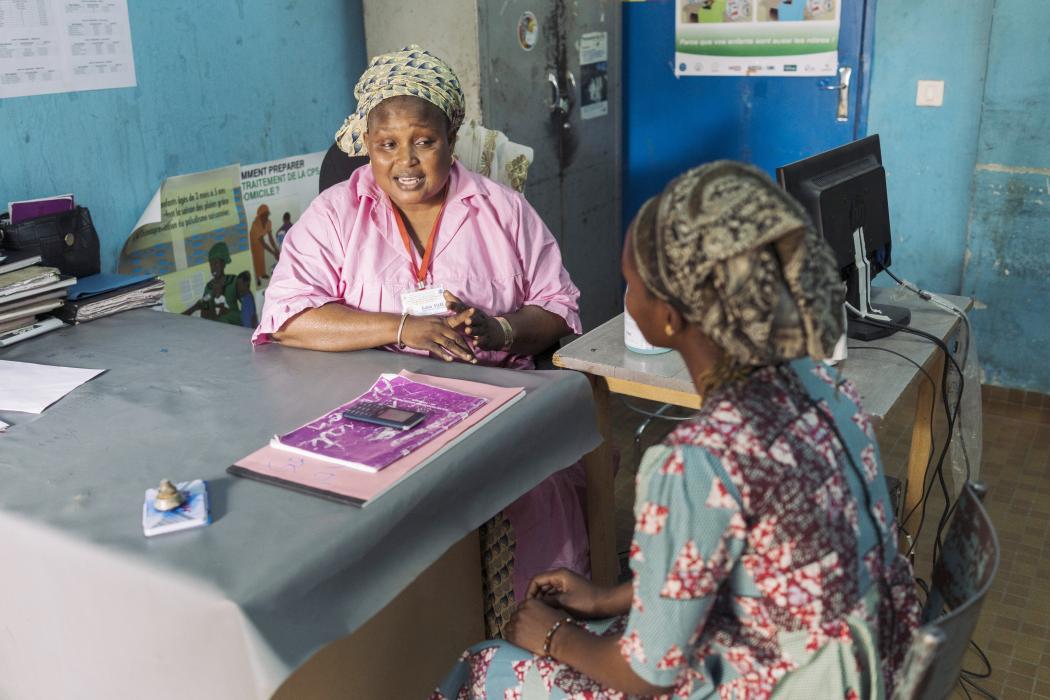
“We have adopted the service integration approach, which has enabled us to meet the needs of our clients, especially in terms of family planning,” says Nebenhide Gamba Ouedraogo, a midwife at the Urbain Health Center in Burkina Faso. “It has improved the quality of care and allows us to further reduce missed opportunities which, in turn, improves our indicators.”
Funded by the Bill & Melinda Gates Foundation, IntraHealth’s INSPiRE initiative helps governments in West Africa integrate services for family planning, nutrition, and maternal, newborn, and child health. Facilities in INSPiRE’s flagship countries—Burkina Faso, Côte d’Ivoire, and Niger—have seen large increases in the number of women adopting family planning methods immediately after and within six months following a delivery.
“This is a great way to advance universal health coverage in countries where access to care remains a big challenge,” says Marguerite Ndour, INSPiRE’s project director.
IntraHealth helps countries and their health workers provide a full range of family planning services for clients at any stage of their reproductive lives.
Our programs work with a wide range of partners—including local officials, civil society organizations, young people, religious leaders, and policymakers—to make family planning methods and information more widely available at all levels of the health system and throughout communities. And we support integrated services so that clients visiting a health center for other services—such as immunization or HIV counseling and testing—can receive family planning and reproductive health services at the same time.
- 2,207,814
years of protection from unwanted pregnancies provided to couples through contraceptives
- 894,901
new users of contraception
- 240,800
unintended pregnancies averted due to contraceptives (estimated)
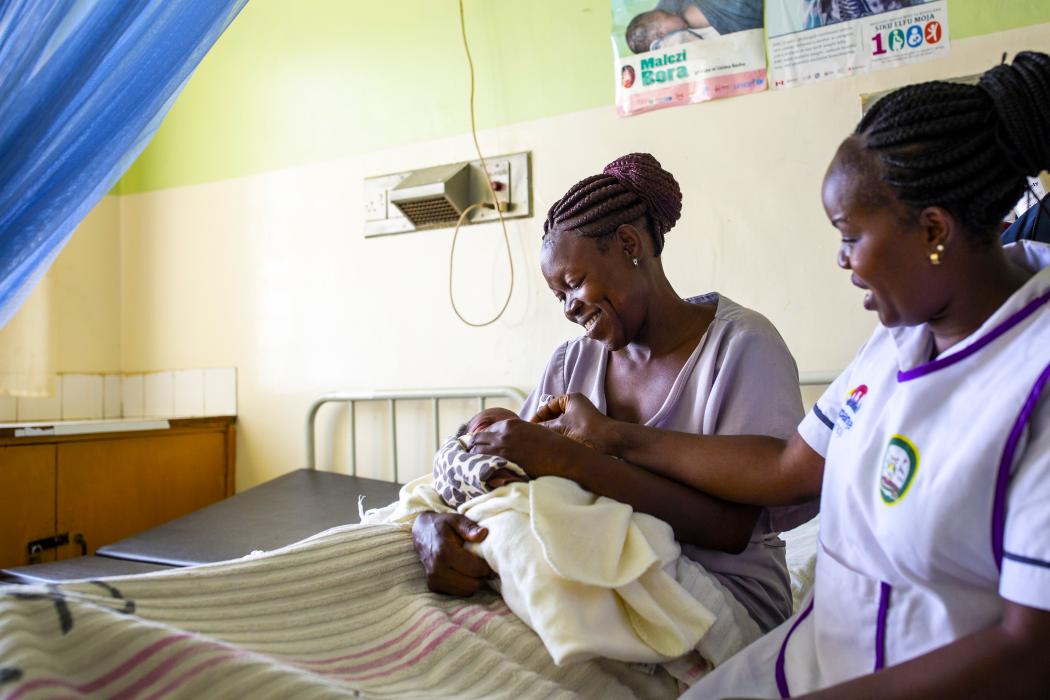
“We saw how to classify children according to the severity of their illnesses, which was a new revelation to us. It has helped reduce the number of infants hospitalized. Now the burden of following hospitalized children has been removed, and the workload at the health center has reduced as well.” —Julienne Kampire, nurse at Shyogwe Health Center, Rwanda
As part of its comprehensive efforts to strengthen maternal, newborn, and child health services in Rwanda, IntraHealth’s USAID Ingobyi Activity identified gaps where health workers needed additional training, clinical mentorship, or other types of support. One of these areas involved health workers’ reluctance to follow the integrated management of childhood illness protocol, a best practice that had been adopted by the Ministry of Health in the early 2000s. Many health workers viewed it as too complicated because they hadn’t received the right training, leading to mistakes in treating some children.
Since Ingobyi began on-the-job training for health workers such as Julienne, adherence to the protocol has improved all the way to 100%.
IntraHealth partners with governments, civil society, and the private sector to improve the health and well-being of women and children and reduce preventable deaths related to pregnancy and childbirth.
Our programs revolve around well-trained health workers. Together we scale up evidence-based practices to respond to danger signs during pregnancy and emergencies, such as obstructed labor and neonatal signs of distress, and to integrate services to make the range of care that women and children need more accessible and efficient.
Our approaches and initiatives cover all levels of care, from expanding safe surgery in hospitals to maintaining essential services in health centers during pandemics to supporting community health workers with digital learning and job aids.
- 345,930
pregnant women attended at least four antenatal care visits
- 665,064
women gave birth in a facility where IntraHealth trained providers
- 94%
of babies born in facilities supported by IntraHealth programs breastfed within one hour of birth
- 95%
of women giving birth under the care of our programs received uterotonics in the third stage of labor
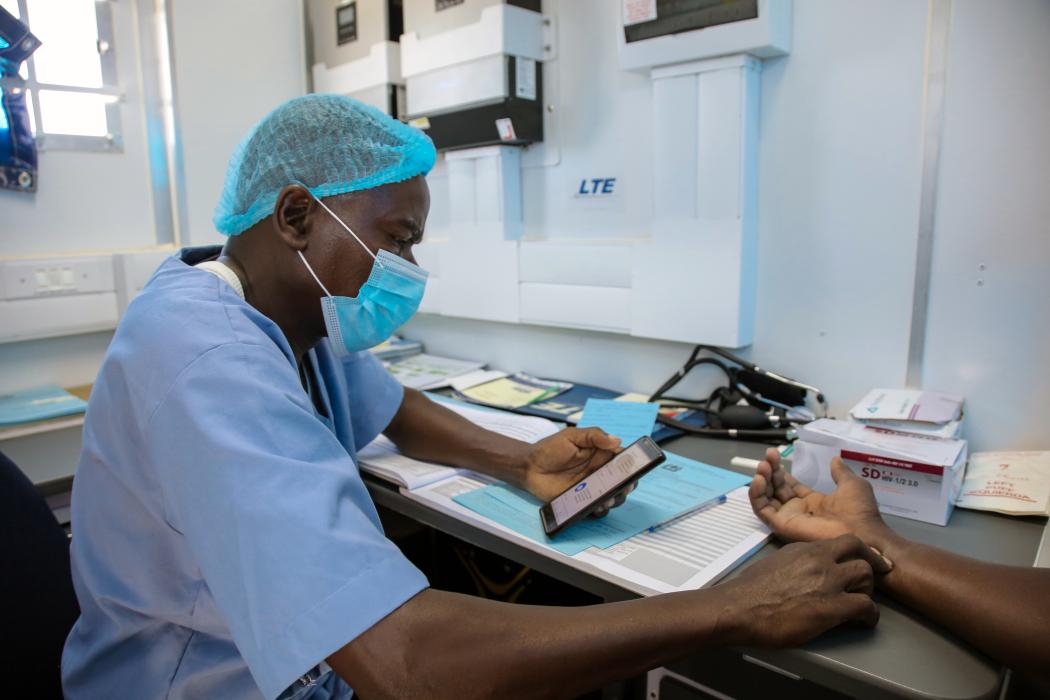
“When I was starting out as a young doctor here in Senegal, noncommunicable diseases were thought to be a thing for rich people. It used to be infectious diseases like measles, malaria, and meningitis that brought people to the emergency room. Now most of those emergencies are caused by NCDs, usually hypertension." —Joseph Barboza, IntraHealth country representative, Senegal
Globally, noncommunicable diseases such as hypertension cause 74% of deaths. In Senegal, 45% of deaths are related to noncommunicable diseases and 17% of those are attributable to cardiovascular disease. A new digital tool—Saytu Tension (“check your blood pressure” in Wolof)—provides a multiplatform and multichannel solution for the Senegalese population and health workers to better detect and manage hypertension. A Senegal-based start-up, BAAMTU Technologies, designed the tool—which includes a chatbot, an app for patient follow-up alerts, a web application for client data, and a website to raise public awareness about hypertension—through a contest organized by IntraHealth’s CARDIO4Dakar project, funded by the Novartis Foundation. The tool is part of a multifaceted strategy through which the project has improved the blood pressure control rate in Dakar by three times in 19 months of implementation.
IntraHealth works with partner countries to establish the powerful data, effective policies, and well-trained workforces they need to prevent noncommunicable diseases (NCDs) of all kinds.
Our programs focus on building strong primary health care teams to prevent and treat chronic and noncommunicable diseases such as hypertension, diabetes, and cervical cancer. Our teams incorporate screening into routine health care, extend services into communities, and raise awareness through social and behavior change communications and digital technologies.
- 513,606
individuals screened for high blood pressure and/or diabetes
- 9,049
individuals screened for Type 2 diabetes; 35% were diagnosed with Type 2 diabetes and 100% of those diagnosed were treated
- 7,315
newly diagnosed cases of hypertension; 99% of those diagnosed were treated
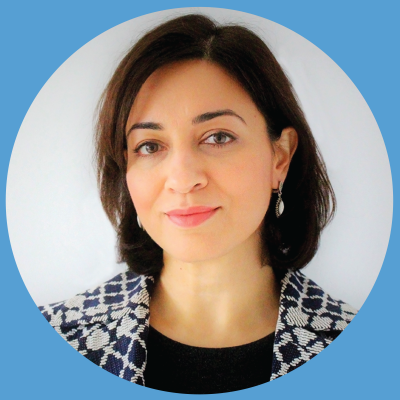
From Our CEO
I am so proud to lead an organization with a rich history of supporting health workers, the backbone of our health systems. In 2022, IntraHealth engaged with over 6,600 local partners in 42 countries to help ensure health workers are ready and deployed where they’re needed most to make health care more available to the communities they serve.
Over the coming year, I look forward to building on this strength while expanding on the impact of local capacity-strengthening that IntraHealth has led for so long—toward a future of inclusive, locally led development.
As my fellow global health CEO Pape Gaye and I wrote in a commentary this year, there are three steps leaders of international NGOs need to take to realize this future:
Advocate for the local point of view—in conversations where decisions are made, through safe spaces for community representatives to speak their minds, and by amplifying their messages in our own platforms.
Rethink how our activities are designed—as we’ve done in USAID’s Accelerating Support to Advanced Local Partners project, through which IntraHealth is helping redefine the rules for local capacity development, emphasizing relationship-building, collaborative learning, and cocreation.
Become a broker to help both donors and partner countries get results—and get the best out of these investments to generate global public goods that will save and improve more lives.
Health workers are central to this vision. Our programs and partnerships will keep amplifying local health workers’ voices, including on issues regarding their safety, mental health, and gender equity. And we will continue to urge greater investment in the health workforce—from district budgets to national policies to our role in advocating to the US Congress in 2022 for the Global Health Worker Initiative.
I hope you’ll join us—and our local partners around the world—in championing health workers and building this future of sustainable, locally led development.
Maqsoda Maqsodi

